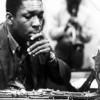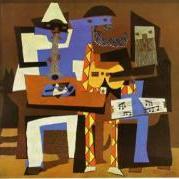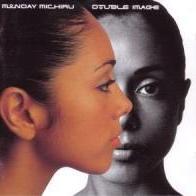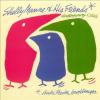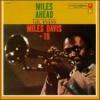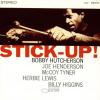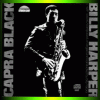Search the Community
Showing results for 'Patty Waters'.
-

2024 @CFL hot stove league
GA Russell replied to GA Russell's topic in Miscellaneous - Non-Political
We have a lot of catching up to do! Let's look first at the news. Swayze Waters' temporary replacement Ty Long has done so well that Wally decided to cut Waters. http://3downnation.com/2017/06/14/swayze-waters-hoping-calm-lions-kicking-game-cfl-return/#comments http://3downnation.com/2017/07/12/lions-cut-kicker-swayze-waters/#comments http://3downnation.com/2017/07/12/release-b-c-swayze-waters-football-doesnt-love-everybody-back/#comments ***** A large number of players have been placed on the six-game injured list. Some think that not all of the guys are injured. Cory Greenwood http://3downnation.com/2017/06/01/esks-cory-greenwood-year-torn-acl/#comments Cordarro Law http://3downnation.com/2017/06/13/stamps-dl-suffers-potential-season-ending-injury/#comments JC Sherritt http://3downnation.com/2017/06/30/jones-tries-fill-void-left-star-linebacker-sherritt-eskimos-host-alouettes/#comments Henoc Muamba http://3downnation.com/2017/06/30/riders-place-canadian-lb-henoc-muamba-six-game-injured-list/#comments Terrence Tolliver http://3downnation.com/2017/07/03/ticats-place-rec-terrence-toliver-six-game-injured-list/#comments DeVier Posey http://3downnation.com/2017/07/12/argos-receiver-devier-posey-placed-six-game-injured-list/#comments Ian Wild and Tristan Okpalaugo http://3downnation.com/2017/07/12/bombers-place-ian-logantristan-okpalaugo-six-game-injured-list/#comments Sam Giguere http://3downnation.com/2017/07/13/alouettes-receiver-sam-giguere-put-six-game-injured-list/#comments Adam Konar http://3downnation.com/2017/07/16/canadian-lb-adam-konar-suffers-significant-leg-injury/#comments Brandon Whitaker http://3downnation.com/2017/07/25/argos-rb-brandon-whitaker-placed-six-game-injured-list/#comments -
Recently, after reading Robert Gordon's biography on Muddy Waters, I got to thinking about how until about 1965 most blues and r'n'b artists worked on singles rather than distinct LP projects. Gordon, alas, doesn't include a sessionography in his book and so I've been trying to piece together Muddy's sessions during the transitional period from 1959-1968 when he did singles sessions and LP sessions (I don't need to research his pre-1959 work because I have the MCA/Chess complete sets covering that period). As part of that project, I've been trying to figure out which songs were actually released as singles (either a or b sides). I'm finding that a bit tricky though because the only good discographical resource I have is a book of singles ('78s and '45's) that made the r'n'b charts, but Muddy's singles stopped charting around 1959. My question: does anyone know of a resource (book or online database) that would provide data on the complete list of blues/r'n'b singles released by various companies during say 1920-1970? Failing that, does anyone know about such a resource covering just Chess Records or just Muddy Waters? Just to share my work on 1959-1968, this is what I have so far. I would be grateful for any corrections or suggestions about where to find better data. Notes: (1)the undated tracks marked with "?" are on the Muddy Waters Chess Box set but I don't know exactly what year they are from; (2) In the case of a single that was also on an LP (e.g., I Feel so Good) I have listed it twice if I know it appeared in both formats). ========================================== Muddy Waters Discography 1959-1968 1959 She's Into Somethin' I Feel So Good Walkin' Thru the Park ?: Take the Bitter with the Sweet ?: Blues Before Sunrise Muddy Waters Sings Big Bill Broonzy LP Tell Me Baby Southbound Train When I Get to Drinkin'/Thinkin' Just a Dream (On My Mind) Double Trouble I Feel So Good I Done Got Wise Mopper's Blues Lonesome Road Blues Hey Hey 1960 I Got My Brand on You Tiger in Your Tank Soon Forgotten Meanest Woman 1961 Lonesome Road/Room Blues ?: Twenty-Four Hours, ?: Elevate Me Mama 1962 The Muddy Waters Twist You Shook Me You Need Love 1963 Five Long Years She'll be Coming Around the Mountain [More?] Folk Singer LP My Home is in the Delta Long Distance Call My Captain Good Morning Little School Girl You're Gonna Need My Help Cold Weather Blues Big Leg Woman Country Boy Feel Like Goin' Home My Love Strikes Like Lightning ?: So Glad I'm Living ?: You Don't Have to Go 1964 The Same Thing You Can't Lose What You Never Had Things That I used to Do My John the Conqueror Root Short Dress Woman Put Me in Your Lay Away 1965 1966 Muddy, Brass & Blues LP Corrina, Corrina Piney Brown Blues Black Night Trouble in Mind Going Back to Memphis Betty and Dupree Sweet Little Angel Take My Advice Trouble Hard Loser My Dog Can't Bark [session with Clarinets?] 1967They Call Me Muddy Waters (Tracks from many earlier sessions) LP When the Eagle Flies Crawling King Snake County Jail It's All Over Bird Nest on the Ground They Call Me Muddy Waters Find Yourself Another Fool Kinfolk's Blues Making Friends Blind Man Blues Two Steps Forward Howlin' Wolf 1968 Electric Mud LP I Just Wanna Make Love to You (I'm Your) Hoochie Koochie Man Let's Spend the Night Together She's Allright Mannish Boy Herbert Harper's Free Press News Tom Cat The Same Thing
-
This stream: https://www.npr.org/2020/07/23/894579168/the-golden-age-a-newport-jazz-festival-special << The Newport Jazz Festival was just one year old when the Clifford Brown/Max Roach Quintet blazed onto its stage in 1955. By 1960, when pianists Dave Brubeck and Horace Silver each played a rollicking set, the event was an institution, known all over the world. And so it remains today — though there's something to be said about the fest in that formative era, when every step forward was historic. For all of us at Jazz Night in America, the Newport Jazz Festival is both hallowed ground and a cherished hang. Our host, Christian McBride, is the festival's artistic director. (Call that a disclosure, if you like; we think of it as a heavy asset.) So this summer, in the absence of a physical gathering, we've set out to lovingly recreate the festival experience, Jazz Night-style. Our three-part series begins with The Golden Age — a jump back to the mid-to-late '50s, featuring McBride's selection of rare and unreleased Newport recordings by Brown and Roach, Brubeck and Silver, along with a killer festival house band. (Will there also be a taste of Muddy Waters? You'll have to listen to know for sure.) Musicians Newport House Band: Joe Zawinul, piano; Howard McGhee, trumpet; Clark Terry, trumpet; Zoot Sims, tenor saxophone; Wendell Marshall, bass; Roy Haynes, drums. Clifford Brown/Max Roach Quintet: Clifford Brown, trumpet; Max Roach, drums; Harold Land, tenor sax; Richie Powell, piano; George Morrow, bass. Dave Brubeck Quartet: Dave Brubeck, piano; Paul Desmond, alto saxophone; Eugene Wright, bass; Joe Morello, drums. Horace Silver Quintet: Horace Silver, piano; Blue Mitchell, trumpet; Junior Cook, tenor saxophone; Gene Taylor, bass; Roy Brooks, drums. Set List "Chasin' At Newport" (Newport House Band) "Jaquis" (Clifford Brown/Max Roach Quintet) "I Get A Kick Out Of You" (Clifford Brown/Max Roach Quintet) "Swanee River Boogie" (Dave Brubeck Quartet) "Blue Rondo À La Turk" (Dave Brubeck Quartet) "Señor Blues" (Horace Silver Quintet) "Sister Sadie" (Horace Silver Quintet) "Goodbye Newport Blues" (Muddy Waters) >>
-
From the Henry Grimes website: Saturday, March 4th: Henry Grimes & Patty Waters, Kunstencentrum Belgie, Burgemeester Bollenstraat 54-56+, 35OO Hasselt, Belgium, + 32 (O)11 22 41 61, www.kraak.net/festival2006, belgie@skynet.be; Tuesday, March 7th: Henry Grimes & Patty Waters, Les Sept Lezards, 1O rue des Rosiers, Mo St. Paul (le Marais), Paris, France, + 33 (O)1 48 87 O8 97, www.7lezards.com, info@7lezards.com; Wednesday, March 8th: Henry Grimes & Patty Waters, Marc Fevre & Benedicte Bucher's gallery, 14 rue Jules Valles, 75O11 Paris, France, + 33 (O)1 43 73 53 46, MoratLaurent@yahoo.com; That should be interesting!
-
Based on J.L.’s tag, I think he’s looking for the cd called Troubled Waters: Deep Soul from the Deep South, https://www.discogs.com/Various-Troubled-Waters-Deep-Soul-From-The-Deep-South/release/3782260 Since he doesn’t use PayPal finding a copy may be difficult.
-
Yes, thanks. I have a Canon PowerShot SX730 that's a pocket camera with an insane 40x optical zoom. So even though I was sitting pretty far away from the stage, I got some good shots. Here's one of Patty:
-
A friend sent me this recently, so I thought I'd pass it on:
-
Clifford Owens Peppermint Patty Otto Link
-
Has anyone heard anything about this? Sounds interesting. Muddy Waters Authorized Bootleg: Live at the Fillmore Auditorium - San Francisco Nov 04-06 1966
-
Henry Jacobs' "The Wide Weird World of Shorty Petterstein." One Man Goofing: A visit with legendary Zen humorist Henry Jacobs by Joel Rose Once a week, Henry Jacobs drives to a community center near his house in Marin County, California to play ping-pong with his neighbors. But it’s ping-pong with a twist: Jacobs, a natural righty, insists on playing with his left hand. “I don’t know if I’m as good,” he says. “But I sure have a lot more fun, because I can surprise myself. With my right hand, I never surprise myself.” The 82-year-old Jacobs has been playing left-handed ping-pong every Monday night for the last seven years. At first, he says, the neighbors were skeptical. But they’ve gradually come around and started playing with their off-hands, too. Jacobs recently started filming interviews with his fellow left-handed ping-pong players for a documentary. “I envision it mainly for the Third World,” he says, and for a second it’s hard to tell whether he’s joking or serious. “The motive is to try to clean up the rather ugly image [of Americans] in the last 50 years or so,” culminating with the present conflict in Iraq. Jacobs says he wants to offer an alternative view of American culture, and ping-pong is the perfect vehicle because of its popularity around the world. “The economics of it are pretty basic. A paddle which you could make out of banana leaf or whatever,” he deadpans. “It’s not about wiping out the planet. It’s about a simple activity called ping-pong.” Jacobs sees the new documentary—which doesn’t yet have a title—as a kind of sequel to The Fine Art of Goofing Off, the series of animated television programs he worked on in the early 1970s. He says he’s filmed eight or nine interviews so far. Instead of shooting them head on, Jacobs had his subjects invent tasks to perform. (“One guy is fixing an electric lamp. Another guy is diddling around with some paintings.”) The point, says Jacobs, is they’re involved in what they’re doing, even while they’re talking out loud about ping-pong. “They’re not forced keep trying to remember all the points they wanted to make,” says Jacobs. “They can stop talking and get the screw-driver in the right place. It takes the pressure off to constantly be producing something useful and intelligent.” And of course, “all this will be edited mercilessly. So you’ll only get little pieces of anything.” This, says Jacobs, was point of The Fine Art of Goofing Off: “Never do something so long as to bore someone.” * * * Henry Jacobs lives near the top of a winding road, on a hill overlooking Point Reyes National Seashore, about an hour north of San Francisco. A single concrete pillar holds up the roof of the house; wooden beams radiate off in various directions. Jacobs has lived on this spot for 30 years. Some of the present house is recycled from an earlier one that burned down in the 1990s, taking most of his possessions with it. The hipster moustache Jacobs wore in the ‘50s and ‘60s is a full beard now. His long white hair is pulled back in a ponytail. On the day I dropped by, Jacobs was recuperating from a cold. He’d also been up late teaching himself how to use a new DVD burner. Still, Jacobs was a gracious host; he insisted that I stay for tea as he rambled through the high points of his five-decade career as a satirist, improviser, radio artist and filmmaker. In a few days, Jacobs said, a crew would be coming over to shoot material for a documentary about him. “The filmmakers, they wanted to come up with a script. I said no way. I don’t do that. We just do things on tape. And if you like ‘em, we use ‘em. We’re not gonna redo them. My theory is that if you’re reading a script or thinking about a script, that cuts you off,” he told me. Jacobs prefers the spontaneity of improvisation: “just letting the energy out. Plans and scripts, they have nothing to do with that.” It’s the same approach Jacobs brought to his radio skits more than 50 years ago. One of the funniest and most famous started with “absolutely no plan, no plan whatsoever.” Jacobs says he was sitting around one day with his friend and collaborator Woody Leafer. “I turned the tape recorder on. And Woody said something like, ‘We’re here talking to Shorty Petterstein, a jazz musician.’ And I just answered him.” After some artful editing by Jacobs, “Interview with Shorty Petterstein” found its way onto LP and 45 – and out into the hipster zeitgeist of the middle 1950s. “It became sort of, at that time part of the popular culture,” Jacobs remembers. “Lines in it that people liked: ‘I didn’t want to fall up here in the first place’ and ‘don’t bug me.'” Jacobs started producing his radio show “Music and Folklore” in the early‘50s at the University of Illinois. He would record and edit the show in his spare time, and then ship the tapes to free-form station KPFA in Berkeley. At first Jacobs conducted straight-ahead interviews about what would now be called world music. But on occasions when Jacobs couldn’t find a real expert, he would sometimes invent one. “The most successful one I did,” Jacobs remembered, “was a Hebraic musicologist named Sholom Stein. He pretended to trace the origins of Calypso to ancient Hebraic texts.” The joke was so subtle that listeners called in to tell him he’d been duped. “Music and Folklore” caught the ear of Moses Asch, the owner of Folkways records, who released some excerpts on the 1955 LP, Radio Programme No. 1. After the LP came out, Jacobs said he got offers to cross over into stand-up comedy, but he declined. “Much more fun to just do it in my little laboratory on tape and edit it forever,” he said. “Start studying the micro-temporal considerations of how long a pause… should… be….before you went on talking.” * * * By 1953, Jacobs had moved to San Francisco. And he struck up a friendship with comparative religion scholar Alan Watts, who also had a radio show on KFPA. Watts was already a hero to the Bay Area counter-culture. That didn’t stop Jacobs from making fun of him. “Say he walks into a room. And I say, ‘I want you to meet my friend, Albert Watts.’ And he loved it because everybody in his life was like, ‘Oh Mr. Watts, on page 82, you said this. And what did you mean?'” It was Jacobs who first suggested that Watts record his lectures with a portable Nagra tape recorder, which was still a novelty at the time. And it was Watts who introduced Jacobs to his future wife, Sumire Hasegawa (the daughter of Watts’s colleague Saburo Hasegawa). “I tried courting her,” said Jacobs, “and it seemed like I was unsuccessful.” A few weeks later, Sumire surprised him with a gift: a tea set. “That’s a pretty far-out gift to get. A tea set? Like whoa, what does this mean? I was lost from that moment. I was just following orders. And I married her. And we had three kids.” (They were married for 17 years; today their oldest daughter is married to Watts’s son.) Jacobs, Watts and Hasegawa worked together on several recordings, including an LP of Haiku called This is IT!. Hasegawa reads the poems in the original and Watts reads in English translation, while Jacobs directs a bunch of drummers and instrumentalists. Despite his close affiliation with Watts, Jacobs insists he’s never been very religious. Jacobs grew up in Chicago, where his father was a deacon in the Congregational Church. But Jacobs’s father quit the church when he was just five years old; as a results, “I went to Sunday school two times,” Jacobs said. After college, he helped set up a TV station in Mexico City. Jacobs was back in Illinois when he got his first tape recorder in the late 1940s. Before long, he acquired another one, and started experimenting with rhythmic loops, feedback, and other kinds of musique concrete. His experiments with audio tape would culminate in a series of sound and light concerts called the Vortex Experiments. Jacobs says the inspiration for the series came from avant-garde composer John Cage, who visited San Francisco in 1955. “‘He said, ‘Henry, I’ve heard about you,'” remembers Jacobs, breaking into an old-fashioned lisp. “‘I’m doing a concert. I don’t know anything about tape recorders. And can you help me?'” Cage wanted to record 12 different radio stations, and then play them back through a dozen loudspeakers. Jacobs managed to procure the necessary equipment through a well-placed friend at the Ampex company. “And that’s got to be what turned me on to the Vortex thing.” The Vortex Experiments took place inside Golden Gate Park’s Morrison Planetarium. On Monday and Tuesday evenings—when the planetarium would otherwise have been closed—Jacobs and filmmaker Jordan Belson directed a 360 degree sound and light show. Jacobs recorded music for Vortex, and invited composers from all over the world to do the same, including Toru Takemitsu, Luciano Berio and Karlheinz Stockhausen. By putting loudspeakers all around the room, Jacobs basically invented surround sound. Academy Award-winning sound designer Walter Murch credits him with inspiring the multi-track sound that’s now standard for big-budget films. “This idea of sound that moves all the way around in the theater—that’s linked to the kind of experiments Henry was doing in the Morrison Planetarium.” (Murch and a young director named George Lucas would later invite Jacobs to do an improvisation for the soundtrack to their 1971 sci-fi film, THX 1138. He doesn’t appear on camera, but you can hear his voice.) After about two seasons of Vortex, the planetarium staff started to notice the “funny smell” outside during the concerts, said Jacobs, and asked the organizers to take their experiments elsewhere. By then, Jacobs was also tired of working with collaborator Jordan Belson. (Jacobs remembers Belson as a “prima donna” who liked to talk about “what a serious artist he was and all that shit”.) The disintegration of Vortex —along with the emerging need to support a family—pushed Jacobs into the field of audio-visual consulting. For much of the 1960s, Jacobs “sold out,” as he puts it. He made ads for Japan Airlines. He filmed surgery at a San Francisco hospital using a mirror, camera and boom mic. And he helped wire Bank of America’s world headquarters for sound and video. In 1965, Jacobs began studying the sitar with Ali Akbar Khan, who had recently set up a school in Berkeley. Jacobs later compared this to “studying tennis with Tiger Woods”—because Khan plays sarod, not sitar—”but I hung in there for five years.” Jacobs made some of his best work in the early 1970s. The Fine Art of Goofing Off was a three-part animated series for public television station KQED in San Francisco that Jacobs describes as “Sesame Street for grown-ups.” “I had a group of very talented improvisational actors called the committee,” Jacobs said. “I’d just say come on over to the studio. We’re working on this series about leisure. They’d do some riff. But with some skillful editing, it could be perfect.” The series included fake TV commercials for such unlikely products as talking slowly and working overtime. In one on these, the voice-over urges the viewer not to give up after only 8 hours: “You still have a lot in you! A lot of the real drive and grit that makes America what it is. Don’t waste it at idle pass times! Log a few extra golden hours at the old grindstone.” One of Jacobs’s favorite skits from the series is also one of the simplest: an announcer just repeats the question, “Can you hear me?” over and over and over again. “Bob McClay liked it,” said Jacobs. “He did a primitive visualization of a dog sitting in front of an old-fashioned radio. The two went together really well. That of all of this is the work I’m most proud of.” * * * The year 1973 was a difficult one for Jacobs: his wife divorced him, and his friend Alan Watts died. In 1976, Jacobs moved north to Inverness, California, living on land he’d bought with Watts’s son Mark. Jacobs is still the curator of the Alan Watts archives, which he says brings in a “steady trickle” of money. A fire tore through the valley in 1995, burning ten thousand acres and dozens of houses. The Watts tapes, which were stored elsewhere, survived; many of Jacobs’ tapes weren’t as lucky. Jacobs rebuilt with the help of some insurance money and architect Daniel Lieberman. Today he lives there with Susan Hyde, his companion of 10 years. For a long time, Jacobs’ recordings were out of print. That began to change in 2003 when Locust Music reissued Radio Programme No. 1 and other titles from the 1950s. Some of Jacobs’ old master tapes were rediscovered under a house in Mill Valley in the late ’90s; a compilation of those is now out on CD from Important Records under the title The Wide, Weird World of Henry Jacobs. That release also includes a DVD featuring three episodes of The Fine Art of Goofing Off, which has helped push Jacobs back into the public eye. He was invited to the 2006 Birmingham TV and Film Festival in the UK for a screening of Fine Art, but Jacobs didn’t go, sending in his place a 12-minute film by his neighbor and longtime friend, director John Veltri. That short is now the foundation for a full-length documentary. Jacobs says he’s flattered by the attention, but admits he does find it a bit awkward. “Veltri and his wife, they do kind of a slight hero worship on me,” he says, “where they say things like, ‘Alan Watts was just an old drunk blabbermouth, and you’re the real guy.’ And I’m wondering, what kind of con is this?” Jacobs also declined an invitation to appear at ArthurFest in September of 2005, where episodes of Fine Art were screened on the main stage between bands. When pressed for a reason, Jacobs cited an unfavorable impression of Los Angeles –”the smog, the overall growth of the place” – as well as a dislike of airplanes and hotel rooms. But mostly, Jacobs just seems to prefer staying home. There’s his Monday night ping-pong game, for one thing. And there’s another monthly ritual he doesn’t want to miss. On the full moon of each month, Jacobs leads an outing down to a sweat lodge on the beach near his house. He says the idea is to get very, very hot, and then jump directly into the chilly waters off Point Reyes, before running back up the beach to the sweat lodge. “Every time when I come out of the ocean,” Jacobs says, “I’m nude. And I have to get from here to there, and I usually do it running. And I always feel like I’m 8 years old when I do it. Every single time, I get this convincing feeling that hey, I’m eight years old. How about that shit?” Sholem Stein interview: https://youtu.be/tNUCiF84lWQ Shorty Petterstein interview: Both of those appeared on Lenny Bruce's first album (see above, on the right), but Lenny had nothing to do with them. P.S. Sholem Stein is played by Jacobs' friend Woodrow Leafer, Jacobs is the interviewer; in the Petterstein interview Jacobs is Petterstein and Leafer is the interviewer.
-
John Waters Mink Stole Nellie Fox
-
Dee Wells Hyacinth Bucket Ethel Waters
-
Thanks for the info on Benny Waters. I had never heard of this artist.
-
Trumpeter and vocalist Doc Cheatham was still playing gigs when he died a few days short of 92 in June 1997, not long after a gig at Blues Alley. He was 91 when he recorded a CD with Nicholas Payton for Verve in 1996. Eubie Blake was active playing well into his nineties, but I am not sure that he made any new recordings after the mid-1970s. After his death in 1983, supposedly at the age of 100, it was later discovered that he was only 96. The record may be held by Alto saxophonist Benny Waters, who celebrated his 95th birthday with three days of recording at Birdland. As I remember, he was a Jehovah's Witness or Christian Scientist, he refused treatment for a treatable illness and died the following year at 96. .
-
My father was an avid music fan, so I grew up listening to his records. This was the 1970s, and he gravitated to all sorts of music: rock, pop, and soul, and jazz--usually from the contemporary/fusion end of the spectrum. It was very eclectic, very wide-ranging. As I got older, I could see -- in retrospect -- that there was an element of improvisation that ran through much of the music that he loved. So I grew up hearing artists like Santana, the Allman Brothers Band, Steely Dan, The Crusaders, George Benson, and Return to Forever. Obviously, that musical background informed my first explorations of jazz in late high school and college. But my dad never had any interest in looking backward, music-wise. His stuff was always hip and contemporary. My first self-directed musical explorations (in high school in the 1980s) focused on 1970s prog rock, bands like Genesis and Yes. Again, retrospectively, I can see that I was following in my dad's footsteps, attracted to "instrumental music" with lots of improvisational elements. But, unlike my dad, I had a historical bent. I was listening to 70s music during the 80s, and I wanted to keep going backwards. By the time I got to college, I realized that jazz was the thing behind so much of the music that was attractive to me, informing it, even if it wasn't jazz per se. I also had a sense that there was something big there that I was missing, some sort of hidden-to-me history, and I wanted to understand it and get in on it. Like a lot of you, the library was a HUGE resource for me -- both for records and books. I also spent many, many hours in the basement of the UGA library looking over old copies of Downbeat, Jazz Times, and Jazz Journal International. They were all bound in annual volumes, so I could pick any given year and pore over an entire year's worth of magazines. Given the critical assumptions of the day, I suppose it's no surprise that I wanted to learn about "real jazz," which meant jazz performed on acoustic instruments. My first footholds were the heavies that draw in so many of us: Miles, Coltrane, and Mingus. After not leaving much of an impression initially, Kind of Blue, hit me like an electric shock one day. (Specifically, it was Coltrane's solo on "Blue in Green"; an unforgettable moment.) From there to A Love Supreme, which also took a long time to absorb. And then Mingus at Antibes. It hit harder in some ways than even Miles or Trane. Mingus, yes! But also Dolphy and Booker Ervin! What's funny is that I didn't have much money at the time, and I was reading about many, many records that I wanted to hear so badly. But I think it was a blessing in disguise that I didn't hear more -- because I probably couldn't have absorbed the music more quickly than I did. More albums would have just muddied the waters. Taking in these three albums -- Kind of Blue, A Love Supreme, and Mingus at Antibes -- and making sense of them took a LONG time. I had to listen to them 20 times before I really began to understand what they were about. So many of the musical assumptions were different and confusing. After that, I did what many of you describe. The leap-frogging thing. From Mingus at Antibes to Booker's Freedom Book. "Oh wow! Jaki Byard! And Jaki's on Mingus records too!" From one to the next and so on and so on. What's strange (or maybe not), given my background, is that for many years I avoided electric jazz. For example, I probably had 20 Miles Davis records before my wife bought me In a Silent Way. Of course, that BLEW MY MIND. Looking back on it now, that avoidance was crazy and silly. But maybe pre-70s jazz was a way for me to stake out some musical territory of my own. It wasn't turf that my father had already shown me. Some time ago -- maybe 15 or 20 years ago? -- I started realizing that the eclectic 70s stuff I grew up with and Jazz (with a capital "J") didn't have to be a separate thing. As I dug deeper into 70s jazz, I was amazed by what I was hearing. It didn't have anywhere near the critical credibility of stuff from the 60s and before -- but it was powerful, amazing, and OVERLOOKED music. And that's when I began to realize that the "Jazz Died in the 1970s" message that I'd heard so many times was a canard. In fact, the more I dug, the more I felt like 1970s jazz was a relatively unexplored gold mine. The stories that I'd heard of the 1970s jazz being an aberration were flat-out wrong. Not coincidentally, that evolution in my tastes corresponded with the proliferation of music blogs that made nearly entire catalogs of then-obscure labels readily available again. I dug into "Magic Purple Sunshine," and I discovered Martial Solal's MPS records. I dug into a Muse records blog, and I found James Moody's stuff and Woody Shaw's stuff from the 70s. Many of you on this site lived through that, were discovering this music as it was released, but that was all a looking-backwards thing for me. It was all "new old stuff" -- aside from the few things my father had played (George Benson, A&M Gato, post-Jazz Crusaders Crusaders, etc.). So I feel like that whole 70s Jazz thing was my SECOND discovery of jazz. I realized that I shouldn't or couldn't necessarily trust any "critical consensus." You have to listen for yourself and make your own determinations. And those conclusions -- the personal ones -- are the things that matter MUCH more than any collectively-settled-upon facts or canon. For our conceptions to be truly meaningful, it's got to be something that we assemble ourselves from the parts that make sense to us, and those things are largely subjective and contextual and personal and contingent. To use a religious metaphor, we all have to "work out our musical salvation in private." That's one of the reasons that I love this board so much. I'm continually reminded of the fact that other people hear things that I don't hear while simultaneously being shown that there are also many people who do hear what I hear -- and that's comforting because listening to this music often can be a lonely pursuit. You understood the importance of hearing things for yourself a lot sooner and more intuitively than I did. I admire that. I feel like it took me a long while to get past my "book learned" way of thinking about the music. It was only when I just dove into the pool and started splashing around with less fear and discrimination that I really began to understand things on a deeper level. I'm thinking too of all that stuff about age and wisdom making your earlier notions of right and wrong, good and bad seem youthfully ridiculous and rigid. At least I hope I'm moving in that direction as I age. My body is surely stiffening up, but I hope my mind is growing more limber.
-
I actually like that one and the two similar ones by Muddy Waters, but I realize I am well in the minority, and have always been a sucker for 60s "psychedelic" stuff.
-
And vice versa, where people claim for themselves or attribute to others, songs that actually are traditional. And just getting those things wrong generally. I love Muddy Waters, but he is often credited with writing things he didn't - Got My Mojo Working, Baby Please Don't Go, Roll 'n Tumble, etc.
-
I haven't listened to the Stones for years either, but in 1964, when I was 24 and had been a confirmed jazz listener for 7 years, the choice was between the Beatles and the Stones and the Stones won hands down. As is shown by my occasional choices in the "What are you listening ..." thread, I retain my enthusiasm for Jimmy Reed, Muddy Waters, Howlin' Wolf, etc who were worshipped by the Stones in those days. I used to hang out with a Leeds blues band called the Blue Sounds who got to play at the Cavern in Liverpool, but never made the big time like the others. Their keyboardist, the late Paul Woodrow, was invited to sit in by a blues band at the Flamingo in London, but the singer said no. The singer was Jagger. This was the Stones before they hit the big time.
-
Y'all oretty much nailed this one, just as I had anticipated. The only ones that weren't specifically ID'ed were #s 10, 16, & 17. And I believe a few people said that #10 could be/might be/sounded like/whatever Oliver Nelson. Close enough. Still, it was a gas reading all the commentary, and partaking of some pretty different viewpoints of the same piece by different individuals. Made for some good reading. Thank you all! Hope the discs made for some equally good listening. And now, on with the show... TRACK ONE – “How High The Moon” by Brother Jack McDuff From Prestige 7642, I Got A Woman (LP) Jack McDuff – org, Harold Ousley & Red Holloway – ts, Pat Martino – g, Joe Dukes –d (Recorded 2-?-1966) As some of you noted, this one just screams “OPENER!!!!” It almost made my last BFT, and I wasn’t going to let it escape again. Ousley does indeed sound a little out of sorts, but nothing too drastic. Everybody else is hitting on all cylinders, and Dukes cracks me up with his show-biz antics. The whole things got a show-biz vibe to it, actually, and no musical integrity is sacrificed in the process. These are all players who were well-seasoned in the art of playing for people, not at them, and I for one find this kind of stuff impossible to resist. As also noted, the arrangement is really nifty, not getting in the way of the jamming one whit. It actually enhances the solos, setting them up and providing a subtle episodic flavor to what could have been just another run-through on some well-worn changes. I particularly love the ending, which is just a little bit wacky, and which also sets up the possibility of anything happening next. Even this... TRACK TWO – “Cheesecake” by Louis Armstrong From Pickwick 33 SPC 3229, Mame (LP) Louis Armstrong – tpt/vcl, Buster Bailey-cl, Tyree Glenn –tbn, Marty Napoleon – p, Alfred Di Lernia - banjo, Buddy Catlett –b, Danny Barcelona-d (Recorded April, 1966) Well! it seems that you either love it or you hate it. If you hate it, you probably find it to be a demeaning piece of tripe not worthy of such a great talent and cringe at the image of perhaps the most important musical figure of the 20th century mugging his way through it, banjo (BANJO!) and all. If you love it, you probably think it’s a piece of wacked out, borderline surrealistic nuttiness, possibly conceived of while Pops was enjoying a visit from Mr. Muggles. Put me down in the latter camp. I can’t listen to this without laughing out loud, and not in mockery, either. Kids love it, too, as evidenced by some of the responses. Mine do, too, and have for years! Yeah, it’s pretty lightweight in the grand scheme of things, but then again, a good smile is nothing to sneeze at! Check out Buster Bailey’s deadpan phrasing behind the vocals, and I think the intent becomes clear – these guys were playing it for grins all around, and not least of all their own! And speaking of grins... TRACK THREE – “Guajeo De Saxons” by Cachao Y Su Ritmo Caliente From Panart 2092 – Cuban Jam Sessions In Miniature “Descargas” (LP) Israel Lopez (Cachao) – b, Emilio Penalver – ts, Virgilio Lisama – bs, Guillermo Baretto – Bateria – bateria, Tata Guines – tumbadora, Rogelio “Yeyo” Iglesias – bongos, Gustavo Tamayo – guiro (Recorded 1957) I find this one totally irresistible, not just for feel, but for musical specifics. “Listen to my saxes, what rhythm they have” is the translated mantra of the corro, and what rhythm they have indeed! Not a jazz rhythm, either, but a distinctly Afro-Cuban one. Listen to how everything about their playing is so deeply inside the beat, and to how every aspect of their sound, from their attacks to their embellishments, springs from the notion of their horns being another ingredient in the delicious rhythmic stew.that’s being concocted around them. Especially interesting is how the traded fours between the horns begin, not on the first bar, as in jazz, but with a pickup into that bar. To me, this reveals a different concept of where “one” is than jazz has, and it’s a concept that is distinctly African. Much jazz has a subliminal African phraseology, but the Cuban cats invariably have it explicitly. Also, the Panart label was to pre-Castro Cuban music (of all varieties) of the 1950s what Blue Note was to Hard Bop during the same decade. For those interested in this type of music, I can’t recommend an exploration of that catalog strongly enough, especially the various “Cuban Jam Sessions”, of which this one led by Cachao is the most famous. If you’re having just one, this would be the one to have, but why have just one? Now, speaking of unique rhythmic sensibilities, tunes that begin with solo saxophone, and unusual trading of fours... TRACK FOUR – “Cosmet” by Sonny Rollins From Milestone M-9064, Nucleus(LP) Sonny Rollins – ts, Bennie Maupin – ts & saxello, Raul De Souza – tbn, David Amaro – g, Chuck Rainey – el b, Eddie Moore – d, Mtume – perc (Recorded September, 1975) This is one of the good’uns that got left off the Silver City set. Rollins is not in particularly heavy exploratory form here, but geez, is he into the tune physically (you should see the back-cover photo of him – his biceps are the size of my thighs, almost!). That tone occupies a room of its own! And his phrasing, especially when he’s playing those slightly displaced longer note is just so precise, so keen, everything happens at exactly the right microsecond. Listen to the little thing he does at 1:26 – talk about flying through the air with the greatest of ease! Plus, he speeds up and slows down his interior time at will, never losing the beat or killing the groove (if anything, his slight-of-ear enhances it). Then there’s all the little micro-moments where his time just dissolves completely into pure sonic energy. Truly, this is a master at work.And, it’s neat to compare the way that Sonny uses alternate fingerings on some notes for to create a more percussive effect with how Emilio Penalver uses the same device on the previous cut. It’s a “tenor thing” that has its roots in Lester Young, but the ways its been put to use over the years cover more ground than the wind. Sonny uses them to create a solo that has the tenor sounding not like a mere horn, but like a freakin’ force of nature! But he’s not the only one getting his groove on here – De Souza sounds fine, Maupin turns up the heat on saxello (with the rhythm section following him beautifully), and then the fours begin. What a glorious mess this turns into! Sonny comes in full-throtle, De Souza picks up the ends of Sonny’s lines for the beginning of his own, and Maupin, now on tenor decides to take it a little bit out, in a way very reminiscent of Sonny from the decade before. Things get a little tangled up, and everybody lets Maupin have a little spot of his own before Sonny most emphatically calls everybody home. It’s a totally groovy cut in my book, and you can dance to it just as easily as you can the previous one. I really like the effect created by the guitar/electric bass/congas/drum rhythm section here, too. Just a nice big rowdy wall of groove, with the relatively transparent sound of the guitar not interfering with any spur-of-the-moment harmonic detours that anybody might want to take.. Nothing subtle at all about it, but damn, if you want to play hard, loose, and loud for a little while, here it is. And as Sonny’s solo shows, there’s plenty of room for tremendous amounts of subtlety while playing non-subtly! TRACK FIVE – “Gone With The Wind” by Morris Brewbeck with Sol Desman (others not credited) From Argo LP-4006 – Morris Grants Presents JUNK (Jazz University's New Kicks)(LP) (Recording Date not given) Well, yeah, What WAS that? Hell if I know, and nobody else seems to, either, except for Jack Tracy, and he didn’t answer my e-mail... (Although, I’ve heard a rather reasonable – but entirely speculative - suggestion that Don Elliot was involved at some level). But it’s a hoot of a send-up that is at once blatant and subtle. This is one of those “cult classics” that I searched for years to find, finally getting it from Da’ Bastids within the last year or so. Some of the parodies are over-the-top, some are just plain cruel in their accuracy, and at least one, the performance by “Ornette Morris with Mon Cerie”, is pretty damn interesting on its own terms. You gotta hear it to believe it. That’s all I can say. TRACK SIX – “The Man I Love” (excerpt) by The All Stars From Decca MCAD-42329 – Gene Norman Presents JUST JAZZ (CD) Charlie Shavers – tpt, Willie Smith – as, Corky Corcoran – ts, Barney Kessell – g, Tommy Todd – p, Slam Stewart – b, Jackie Mills – d (Recorded 8-4-1947) From a bogus live show to a real one. LOVE this cut, LOVE this CD. One of those times when it was all good for all concerned. Shavers just kills here (so much pure POWER here, and of every type), but really, everybody does. It’s Kessell, though, who intrigues me the most. Still young, still a lot of Oakie in his soul, and still working with a comparatively limited vocabulary, but damn, is he INTO it. There’s an intensity to his playing here that borders on compulsiveness, and that compulsion is to PLAY, and that he does. It’s not in the least bit “relaxed”, but oh well. It damn sure SWINGS! A little-noted early masterpiece by this great guitarist, imo. For that matter, this whole concert is a great but often overlooked one. It’s famous (and justly so) for the Lionel Hampton solo on “Stardust”, but what the rest of the guys played w/o Hamp is every bit as good. A highly recommended set, but it might be currently OOP. Don’t let that stop you from looking for it. TRACK SEVEN – “Sack Full Of Dreams” by Gene Ammons From Prestige PR 10022 – My Way (LP) Gene Ammons – ts, Ernie Royal & Robert Prado – tpt; Garnett Brown – tbn; Richard Landry – ts, Babe Clark – bs, Billy Butler – g, Ron Carter – b, Idris Muhammad –d, Patricia Hall, Linda Wolfe, Yvonne Fletcher, & Loretta Ritter – voices, unnamed strings, Bill Fisher -arranger/conductor (Recording Date not given, but album released ca. 1970-72) Ah, the early 70s – big cars, big hats, big clothes, big everything, including big soul. And who had bigger soul than Gene Ammons? Sure, the “sweetening” is all over this one (and it’s not so much “sweet” as it is just plain ol’ BIG), but what’s underneath it all is about as solid as you can get (dig how Idris Muhammed takes fellow New Orleansian Vernell Fournier’s “Poinciana” beat as the basis for his HARD playing for much of the piece). Besides, Jug always played for the people - what the people were into is what he played, and he always played it his way. This cut is no exception. It’s a tune by Gary McFarland that had been popularized a little bit by Grady Tate & Donny Hathaway (in his live shows), but Ammons’s version is definitive, imo, removing all the “sap” from the lyrics and replacing it with 100% Soul of the 200 Proof variety. Whereas the other versions were a little “sentimental”, this one is REAL. Big, indeed! This album’s not on CD, probably never will be, and frankly, this cut is by far and away the highlight of it. But lordhavemercy, it’s one helluva cut, totally of its time yet totally timeless (we all need to get in touch with our Inner Mack...). If we had more Soul People like Gene Ammons playing “pop-jazz” like this, the world would be a much better place. TRACK EIGHT - “I Got It Bad (And That Ain’t Good)” by Archie Shepp From Impulse! AS-9186 – For Losers (LP) Archie Shepp – ts, Clarence Sharpe – as, Cedar Walton – p, Wilbur Ware – b, Joe Chambers – d, Chinalyn Sharpe – vcl (Recorded 8-26-1969) I can only assume that Chinalyn Sharpe was Clarence Sharpe’s wife, and as such, this cut more than makes up for in reality what it lacks in finesse. C. Sharpe was one of the many, MANY players who didn’t vanish from the face of the earth after they vanished form the radar screen of the jazz world. He kept on playing, and as he shows here, he was playing incredibly well, taking his Bird-isms and growing them into something deeply personal and not at all clichéd or imitative. And what did he get for it? A life spent on the fringes, a lot of low-profile, low-paying “local” gigs (best kept secret in the jazz world is the fact that, away from the high profile jobs, there’s a “local scene” going on smack dab in the middle of The Jazz Capital Of The World, New York City. and it’s at least every bit as frustrating, dirty, and soul-eating as any local scene anywhere. Probably more so, considering what’s going on just down the street and around a few corners...). Some of the temptations of the “jazz life” no doubt were not strangers to the Sharpe household, if only as a way to blunt the frustration as the years passed and everything stayed, unfortunately, the same. Except that the music got deeper. But who got to hear it? So yeah, this cut rings true to me, and not a little painfully so. Yet, there is more to it than pain. There’s also the inner bliss that comes from knowing that no matter how much you get shit on, you’re still doing what you want to do the way you want to do it. Shepp called this album “For Losers”, and it’s a bit of a concept album to my ears, the concept being that the “losers” like Clarence Sharpe are in fact the heroes of their time. Still my favorite Shepp Impulse!, all things considered, and still not reissued on CD. The irony is rich... But hey, kwitcherbitchin’ and smile, because.... TRACK NINE – “Everything’s Coming Up Roses” by Count Basie and his Orchestra From Harmony HS 11371 – Just In Time (LP) Marshall Royal, Bobby Plater – as; Eddie "Lockjaw" Davis, Eric Dixon - ts; Charlie Fowlkes, bs; Roy Eldridge; Al Aarons, Gene Goe, Sonny Cohn - tpt; Richard Boone; Harlan Froyd, Grover Mitchell, Bill Hughes – tbn; Count Basie – p, Freddie Green – g, Norman Keenan – b, Ed Shaughnessy – d; Chico O’Farrill – arr (Recorded 9-8-1966) No real musical reason to include this here (although Jaws’ is great, as always), just thought that it would be a wiseguy type sequencing move, good for a grin. But fwiw, Basie supposedly specifically requested that Shaughnessy play on both of his Command albums. Go figure. TRACK TEN – “Self-Help Is Needed” by Oliver Nelson From Flying Dutchman FDS-116 - Black, Brown And Beautiful (LP) Frank Strozier – as; others not credited, but likely including Bobby Bryant – tpt, Roger Kellaway – p, Chuck Domanico – b, John Guerin – d (Recorded ca.1969) Blues And The Abstract Truth may well be Nelson’s small group masterpiece, but Black, Brown And Beautiful is every bit a masterpiece, this time of Nelson’s composing/arranging. This cut is a fine example. I’ve always thought that Oliver Nelson was one of the great musical subversives of his time, able as he was to incorporate dissonance into all sorts of “commercial” settings without so much as raising an eyebrow from the general public. Well, here the setting is a little less commercial. This album was Nelson’s direct comment on the racial turmoil going on in America at the time, replete with explicitly political, self-penned liner notes. Nelson’s commentary on this piece: The surface of this piece is fairly straight-ahead, modern big-band. But listen to the inner voicings, especially in the saxes behind the brass’ theme statement. We’re talking EXTREME dissonance here. Every big-band piece on the album’s like that – straight-ahead on the surface, tense as hell on the inside, even moreso than usual on a Nelson date. And he did it in Los Angeles, no less. In spite of how Nelson’s work and sound permeated all levels of mass-media in America, at its core was this tension, this knowing that things weren’t as they should be, but not knowing how, when, or even if, they would get better. So he soldiered on, playing the game on the surface, speaking his mind on the inside of it. Pretty heavy stuff, really... And Frank Strozier, what can you say? He’s another guy who just kept growing away from the spotlight. Nothing at all “easy” about his playing here, just as there’s nothing at all easy about the writing (and I’ve had the pleasure to play some of Nelson’s arrangements, so I mean that in terms of playing them right as well as what their “meaning” is). Despite how it sounds on the surface, this is THICK music. But now, to lighten up a little bit, we move on to a consecutive series of what could best be described as four “curiosities”, the type of things that make the concept of “Blindfold Tests” so much fun. None of them are the type of thing you’d normally associate with who they are, but they all work just dandily on their own terms. At least they do for me. TRACK ELEVEN – “Hi-Fly” by Lionel Hampton From Hindsight HSR-237 – The Uncollected Lionel Hampton Septet 1963 (LP) Lionel Hampton – vb; others not credited (Recorded 1963) Recorded for some U.S. Navy promotional show, this (and all the other cuts from this album) are very short. Short, but sweet. Who’d ever think about Lionel Hampton, the quintessential extrovert/exhibitionist Swing Era/proto R&B transitional figure turning in a nice, mellow, thoughtful, thoroughly non-stylized rendition of this Randy Weston evergreen? Well, quiet as it was kept (as much by himself as anybody), Lionel Hampton was one of the great players in jazz history. This guy played Coltrane tunes like “Lazy Bird” & “Moment’s Notice” like they were the proverbial pieces of cake, just breezed through the changes like it wasn’t any big deal. Didn’t seem like anything phased him. It seemed that for him, it was all music, and that if you could play, well, you could play any changes. Changes was changes. “Hi-Fly” is not an especially difficult set of changes by modern standards, but how many players of Hamp’s generation could’ve played them as fluently, nonchalantly, even, as he does here? Hey – Lionel Hampton could PLAY! TRACK TWELVE – “Ugh” by The Mercer Ellington Septet From Doctor Jazz 40359 – Duke Ellington – New Mood Indigo (LP) Paul Gonsalves – ts. Chick Corea – p, Aaron Bell – b, Louis Bellson – d; (NOTE – Ray Nance – tpt, Johnny Hodges – as, & Harry Carney – bs are present on the other cuts from this session) (Recorded 1-5-1966) Yeah, it’s really “Windows”. My guess is that this title was bestowed by original LP annotator Stanley Dance, but I can’t prove that. No matter, another short-but-sweet “curiosity”, and quite possibly the first recording of this soon-to-be Instant Classic (perhaps even shortly after it was composed, I don’t know. Perhaps Chick got this recorded to serve as a demo of the song?). Nothing to say, really, other than that it’s beautiful people making beautiful music, and how Chick got his tune played at an Ellington session, even a Mercer Ellington session, is a story that I’d like to hear. TRACK THIRTEEN – “Moon Maiden” by Duke Ellington From Pablo 2310-787 – The Intimate Ellington (LP) Duke Ellington – celeste & vcl (Recorded 7-14-1969) Really thought that more people would recognize Duke’s voice, but I guess if you’re not of the age to have heard him fairly often on TV while he was alive, and/or if you haven’t spent a lot of time with any number of the innumerable live recordings of his, that voice might not be instantly recognizable. Guess I’m older than I realize! Anyway, this one has always tickled me, and it’s just a little out-there in spots. But Duke was an avant-garde-ist in populist clothes anyways, so no surprises there! The celeste reminded a few people of Mr. Rogers, and, yeah, I can hear that – if Mr. Rogers was on the Playboy Channel! Now, from one sex song to another... TRACK FOURTEEN – “Mountain Oysters” by Eddie “Lockjaw” Davis From King KS-1133 – Risky Blues (LP) Eddie “Lockjaw” Davis- ts, others not credited (Recording Date not given) One of the most uniquely identifiable musical voices of the 20th century, regardless of the context. And one of the swingingest. And one of the nastiest. Nothing more to add, except that, as with many other types of meat-preference, in Texas, we use beef instead of pork. Or so it seems. I’ve not yet summoned the courage to partake of this particular delicacy. Some day, perhaps. Or not... TRACK FIFTEEN – “Time After Time” by Shirley Scott Quartet From Impulse! A-9101 – The Definitive Jazz Scene Volume 3 (LP) Shirley Scott – org, Stanley Turrentine – ts, Bob Cranshaw – b, Otis Finch –d (Recorded 9-23-1964) If I had to pick one cut that to me was the epitome of what the Turrentine/Scott partnership was all about, this would be it. Good god, can you get any more relaxed and natural? No, you can’t... And the interaction between the two principles just oozes the give and take, push and pull, you go this way when I go that way of the conjugal relations of a married couple, OOoooooh baby.... Speaking of natural, as great as RVG’s work for BN was, there are times when I think he actually did better work for Impulse!, and this is one of them. Not “perfect” (do you hear how he opens Turrnetine’s mike over halfway into Scott’s intro and just EXPANDS the soundstage all of a sudden?), but I’ve never hear Stanley’s tone captured more intimately – there are moments when you can literally hear his breath just before a note comes out, and it’s all in perfect relative balance with his overall volume. Hope this came across in the digital transfer of this CDR. Anyway, something was brewing in the studio that day, something mellow... TRACK SIXTEEN – “Jax Beer Commercial” by Patty Waters From Water 137 – You Thrill Me (CD) Patty Waters – vcl, Joe Newman – tpt, others not credited (Recorded 1964) Yep, that’s Patty Waters, her of the gut-wrenching, spine-tingling ESP sides, doing a beer jingle with Joe Newman, replete with a little “empty” spot there for anybody who’d like to do a little ad copy writing and/or voiceover work (hint, hint...). The same Patty Waters who repeatedly and rawly screamed “BLACK” in one of the great recorded cathartic moments of 20th century history is here singing about Moody’s Mood, Shearing’s Riff, and The Little Things That Make The Diff. Life is funny sometimes... TRACK SEVENTEEN – “For All We Know” by Patty Waters From Water 137 – You Thrill Me (CD) Patty Waters – vcl, Alan Youngblood – p (Recorded 1979) Yep, that’s Patty Waters, her of the gut-wrenching, spine-tingling ESP sides, doing an incredibly poignant and intimate rendition of a song that’s already incredibly poignant and intimate to begin with. This was 1979, when nobody knew where she was, or if she was even still alive. Well, she was alive, and had probably gotten “damaged” along the way from there to here, and here she was. The same Patty Waters who repeatedly and rawly screamed “BLACK” in one of the great recorded cathartic moments of 20th century history is here singing about just love me tonight, that’s enough to last forever, because forever might be over any second now, and I need to be loved by somebody before it is and I want it to be you. And she sounds like she means (and has lived) every last word of it as much as anybody has ever meant (and lived) anything. Life is funny sometimes.
-
Muddy Waters Daughter Arrested in Fla. By THE ASSOCIATED PRESS Published: March 12, 2004 Filed at 4:36 p.m. ET GAINESVILLE, Fla. (AP) -- The daughter of blues artist Muddy Waters was arrested on murder charges Friday in the 1996 shooting of a man during a drug deal. Rosalind Morganfield, 34, surrendered to police after a warrant was issued for her arrest. Timothy Harrington, 19, was shot during a deal involving three pounds of marijuana, authorities said. His remains were found in 2000. The identification of Harrington's remains led detectives to focus on Waters' daughter and David Myhand, 38. Police did not say what tied them to the crime. Morganfield and Myhand were charged with first-degree murder and could get the death penalty. Myhand was arrested Wednesday and jailed without bail. It was not immediately known if Morganfield had a lawyer. Muddy Waters died in 1983.
-
Does anybody have more accurate recording dates for these recordings? THE KING COLE TRIO Nat Cole (p, vo), Oscar Moore (g, vo), Wesley Prince (sb, vo). Standard Transcription, Los Angeles, c. October, 1938. 1-01. Mutiny In The Nursery 1-02. F. D. R. Jones 1-03. The Sheik Oh Araby 1-04. The Blue Danube 1-05. Button Button 1-06. Jingle Bells 1-07. Swannee River 1-08. With Plenty Of Money And You Standard Transcription, Los Angeles, October, 1938. 1-09. Don't Blame Me 1-10. Lullaby In Rhythm 1-11. Dark Rapture 1-12. By The River St. Marie Standard Transcription, Los Angeles, November, 1938. 1-13. The Wiggly Walk 1-14. Fela Hop 1-15. Chopsticks 1-16. Patty Cake, Patty Cake (Baker Man) 1-17. Blue Skies 1-18. Liza (All The Clouds'll Roll Away) 1-19. Three Blind Mice 1-20. Caravan KING COLE SWINGSTERS Nat Cole (p, vo), Oscar Moore (g, vo), Wesley Prince (sb, vo), Bonnie Lake, Juanelda Carter (vo). Davis & Schwegler Transcription, Radio Recorder's Studios, Los Angeles, November, 1938. 1-21. There's No Anesthetic For Love 1-22. Dixie Jamboree 1-23. Ta-De-Ah 1-24. Reffin' At The Bar-B-Q 1-25. Harlem Swing - vBL 1-26. I Lost Control Of Myself - vBL 2-01. The Land Of Make Believe - vBL 2-02. That "Please Be Mineable" Feling 2-03. Dancing In The Street - vJC 2-04. You're So Different - vJC 2-05. I Wouldn't Have Known It - vJC 2-06. Let's Get Happy THE KING COLE TRIO Nat Cole (p, vo), Oscar Moore (g, vo), Wesley Prince (sb, vo). Standard Transcription, Los Angeles, February, 1939. 2-07. Undecided 2-08. 'Tain't What You Do (It's The Way That Cha Do It) 2-09. Do You Want To Jump, Children ? 2-10. Riffin' In F Minor 2-11. Ol'Man Mose Ain't Dead 2-12. Blue Lou 2-13. Honey 2-14. Russin Lullaby Standard Transcription, Los Angeles, April, 1939. 2-15. Georgie Porgie 2-16. The Limp 2-17. Snug As A Bug In A Rug 2-18. Liebestraum 2-19. Fidgety Joe 2-20. Two Against One 2-21. Some Like It Hot 2-22. I Like To Riff Standard Transcription, Los Angeles, April, 1939. 2-23. Crazy Rhythm 2-24. Moongrow 2-25. Don't Let That Moon Get Away 2-26. My Blue Heaven 3-01. I Was Doing All Right 3-02. I Can't Get Started 3-03. Old Man Moon 3-04. Carry Me Back To Old Virginny Standard Transcription, Los Angeles, May, 1939. 3-05. Moon Song (That Wasn't Meant For Me) 3-06. Baby, Won't You Please Come Home 3-07. Sweet Lorraine 3-08. Rosetta Standard Transcription, Los Angeles, May, 1939. 3-09. Thrompin' 3-10. You're My Life 3-11. Hoy Soy 3-12. Black Spider Stomp Standard Transcription, Los Angeles, June, 1939. 3-13. Take 'Em 3-14. Scategoria 3-15. Rhythm Serenade 3-16. Rib Town Shuffle The Dreamers: Undefined black male quartet or quintet. Standard Transcription, Los Angeles, August, 1939. 3-17. Music'll Chase Your Blues Away - vTD 3-18. I'll Gather Up My Memories 3-19. A Fool's Affair 3-20. Jump, Jack, Jump 3-21. I Knew A Time 3-22. Mine You'll Alaways Be 3-23. Doin' The Bow Bow 3-24. Lilla Mae - vTD Standard Transcription, Los Angeles, May, 1940. 4-01. Slew Foot Joe 4-02. 1, 2, 3, 4 4-03. Crazy 'Bout Rhythm 4-04. Off The Beam 4-05. King Cole Blues 4-06. Jivin' With The Notes Standard Transcription, Los Angeles, November, 1940. 4-07. Early Morning Blues 4-08. Bedtime 4-09. Honey Hush 4-10. French Toast 4-11. Vine Street Jump 4-12. B Flat 4-13. You Send Me 4-14. Love Is My Alibi 4-15. Pogo Stick Bounce 4-16. Gone With The Draft Standard Transcription, Los Angeles, February, 1941. 4-17. Jumpin' With The Mop 4-18. Jam Jam 4-19. Lest's Try Again 4-20. Scotchin' With The Soda 4-21. Fudge Wudgge 4-22. Smokey Joe 4-23. Windy City Boogie Woogie 4-24. Gone With The Draft 4-25. This Side Up 4-26. Ode To A Wild Clam
-
And I saw the Muddy Waters band in 1969 at the unlikely setting of the Batley Variety Club as part of a triple package with a gospel group (Stars of Faith?) and the Horace Silver Quintet with the Brecker brothers and Billy Cobham. Liked the Silver group so much I travelled 200 miles to London to see them again at Scott's later that week.
-

Dallas, Austin, Houston, San Antonio, Etc. Jazz & Other Concerts
mjzee replied to kh1958's topic in Live Shows & Festivals
Just got back. Very, very good performance. The trio (Greene, Pavone, Altschul) were very strong. Vigorous, frequently dissonant, played with assurance and a deep empathy between them. They played some originals to start the concert, and also played some trio pieces in-between backing Waters. I really liked their take on Monk's Off Minor; certainly true to Monk but Greene, in particular, brought his own thing to it. I was very impressed with Burton Greene's playing. Patty Waters... It was interesting to hear her. Truly a case of time catching up to her: where what she did in the Sixties sounded strange and odd, now sounds more familiar because others have followed her path. She doesn't have the voice anymore to yelp and scream; it's now a small voice, breathy, quavering, a very personal sound. The trio toned down their playing while backing her, but still frequently overpowered her voice. It was obvious they loved and respected her, and loved playing behind her. Another interesting facet for me was her song selection. Here there was truly a time warp, as if we were transported back to the mid Sixties. She drew heavily from the Billie Holiday songbook, but exclusively songs where the singer is lonely, pining for her man, lost without him. Even songs that were not Holiday's seem to fit this mold, such as Ornette's "Lonely Woman." I can't imagine any female singer today presenting such a portrait of a woman who is nothing without the love of her man.
_forumlogo.png.a607ef20a6e0c299ab2aa6443aa1f32e.png)

